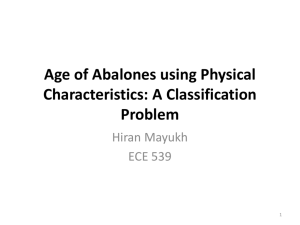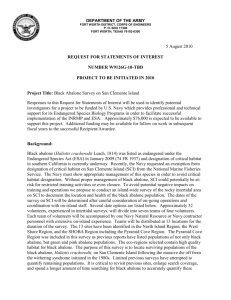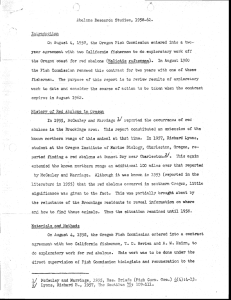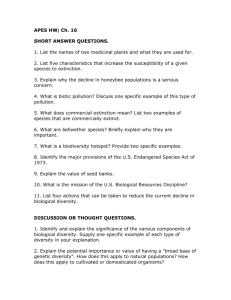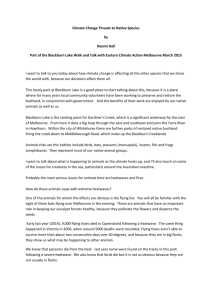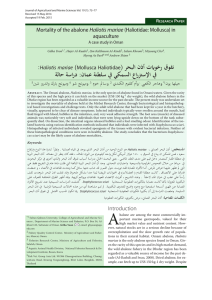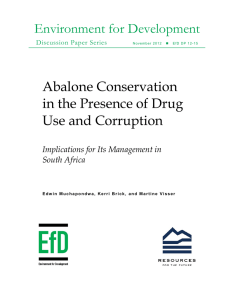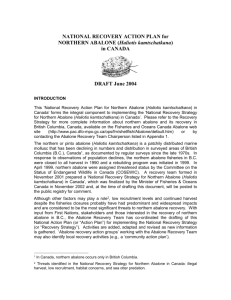Conservation of Small Populations –
advertisement
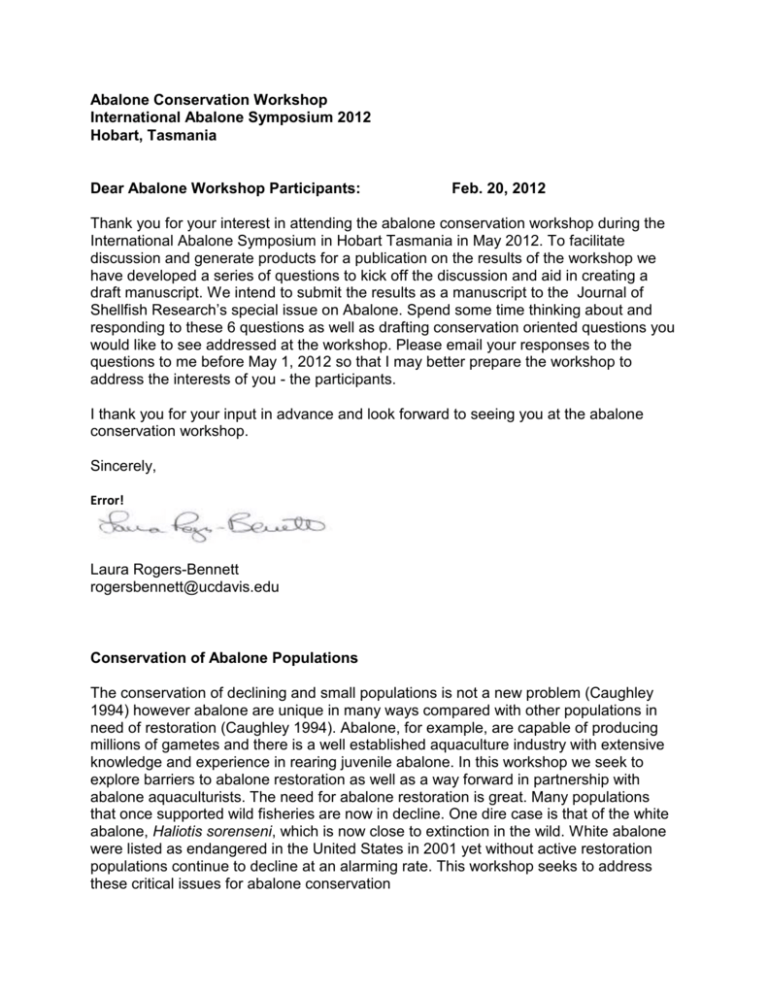
Abalone Conservation Workshop International Abalone Symposium 2012 Hobart, Tasmania Dear Abalone Workshop Participants: Feb. 20, 2012 Thank you for your interest in attending the abalone conservation workshop during the International Abalone Symposium in Hobart Tasmania in May 2012. To facilitate discussion and generate products for a publication on the results of the workshop we have developed a series of questions to kick off the discussion and aid in creating a draft manuscript. We intend to submit the results as a manuscript to the Journal of Shellfish Research’s special issue on Abalone. Spend some time thinking about and responding to these 6 questions as well as drafting conservation oriented questions you would like to see addressed at the workshop. Please email your responses to the questions to me before May 1, 2012 so that I may better prepare the workshop to address the interests of you - the participants. I thank you for your input in advance and look forward to seeing you at the abalone conservation workshop. Sincerely, Error! Laura Rogers-Bennett rogersbennett@ucdavis.edu Conservation of Abalone Populations The conservation of declining and small populations is not a new problem (Caughley 1994) however abalone are unique in many ways compared with other populations in need of restoration (Caughley 1994). Abalone, for example, are capable of producing millions of gametes and there is a well established aquaculture industry with extensive knowledge and experience in rearing juvenile abalone. In this workshop we seek to explore barriers to abalone restoration as well as a way forward in partnership with abalone aquaculturists. The need for abalone restoration is great. Many populations that once supported wild fisheries are now in decline. One dire case is that of the white abalone, Haliotis sorenseni, which is now close to extinction in the wild. White abalone were listed as endangered in the United States in 2001 yet without active restoration populations continue to decline at an alarming rate. This workshop seeks to address these critical issues for abalone conservation Conservation of Small Populations – Ideas for Conservation from the UC Davis Symposium 2/10/2012 Panel Discussion with Dr. Peter Moyle: Moderator Dr. David Wilcove – Princeton University “Against the odds: the science, politics, and surprising success of conserving highly endangered species” Wilcove et al 1993 describes population size at time of listing for the US. “Alliance for zero extinction” shows data for worldwide population sizes at time of listing These figures represent the total pop size of primarily terrestrial plants and animals. How would abalone population sizes at time of listing (or when we became very concerned about them) compare? - General public is only impacted by conservation a small amount (per person) whereas the impact of conservations negative outcomes can be large on a few individuals. Question 1: At what population size should we list abalone species? What is the minimum viable population size for abalone? Scott et al 2010 discuss how many endangered species populations are “conservation reliant” for the indefinite future. That is, management of threats to the population needs to be ongoing in order for the populations to persist and to be de-listed. Conservation actions are required to continue so that the species is not re-listed. 62% of endangered invertebrate species recovery plans listed ongoing artificial recruitment as one of the requirements of sustaining populations. Question 2. What is the role of aquaculture in the conservation of endangered abalone species? Are there incentives we can establish for abalone conservation within the aquaculture industry. Wilcove & Chen 1998 discuss the cost of maintaining endangered species compared to the risk of losing those populations. Question 3. What is the potential annual cost of artificial recruitment through aquaculture? At what point does the risk to the population outweigh the cost of conservation action? **************************************************************************************************** Philip Hendrick – Arizona State University “Genetic Rescue in Small Populations” - Genetic rescue by crossing one population with another can help increase the genetic diversity of an endangered species in the wild (e.g. Florida panthers) But, follow the mantra “Do no harm” Genetic swamping by 1 or a few individuals potentially problematic Effective population size based on inbreeding coefficient Question 4. What are the issues with genetic diversity that we should consider when supplementing the population with farmed seed? **************************************************************************************************** Ron Swaisgood – San Diego Zoo “Captive breeding, reintroductions and translocations as tools to rescue small populations” Stamps & Swaisgood 2007 discuss the importance of the post-release environment relative to the natal environment - Movement vs mortality - Conspecific cues - Individual perception of habitat suitability – maybe based on natal habitat Question 5. What kinds of cues might abalone use to determine suitable habitat after translocation or artificial recruitment? How might we minimize movement (which may increase mortality) after introduction to the new environment? Can we use more environmentally realistic tanks for rearing seed to be stocked in the ocean? **************************************************************************************************** Josh Hull – US Fish & Wildlife Service “Prioritizing conservation of small populations” Emphasized collaboration among stakeholders, especially in the face of reduced budgets. Question 6. What kinds of collaborations will be necessary in order to maintain longterm aid for depleted abalone populations? **************************************************************************************************** Fell Free to Draft a question of your own for discussion of abalone conservation issues.
